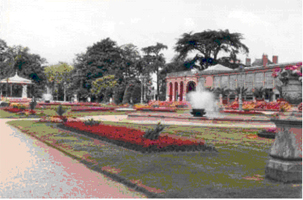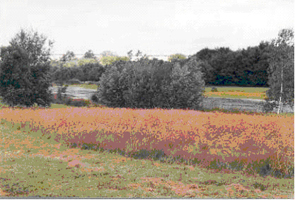 |
 |
 |
 |
 |
 |
 |
 |
 |
 |
 |
 |
Project summary
Name of the case study
Urban Green space differentiated Management
Where is it located?
France
What type of activity is it?
New way of management
Short description of the case study
Rennes is a university city of 212 000 inhabitants which extends on 50.22 km2. With more than 7.94 km2 of green space, 100 000 trees, 660 family gardens, Rennes is a green city. The control of Rennes spatial development has highlighted its land planning policy. Its objectives are to “build the city on the city” instead of leaving urbanisation taking up urban spaces, and to take into account and reorganise what is existing, especially for green space developments. In that way the municipality has chosen to implement a differentiated management of the green asset to enhance its maintenance and lastingness. The differentiated management is the conception, management and implementation of ecosystems (which are under the different level of human influence) and correspond to different social needs.
This approach results in a specific development of the green space, in close link with their characteristics (fauna, flora, biological potential, localisation, functionality…). 7 class of green space types are defined indicating the adapted maintenance. Computer tools allowing monitoring and definition of indicators, and inter-services communication have supported the project.


Greenspace: Thabor Park and Gayeules pond. The high grass edges which girdle the pond are not mown in order to preserve ecotones (source CERTU, 2001)
The experience shows benefits; it helps to meet the needs of an increasing social demand for nature in city centre (social dimension), without increasing the cost of this service by rising local taxes (economic dimension). The environmental issue is also taking into account by cultivation practices which are directed to increase green space biological potentialities, to ensure multiplication of shelters to favour fauna and flora as well as to manage natural resources more sparingly. However some improvements can be underlined like the collection of updated data and the improvement of governance process.
This case was chosen because it represents a good example of green space management. Differentiated management, and the way that the municipality of Rennes implements it, present the basic characteristics of sustainable projects, especially those from sustainable city. Indeed it develops a system of relations between ecological, economic, social and equity issues. The ecological aspect comes from the implementation in the city of a mix between natural and horticultural biodiversity. The proportion between these 2 categories of biodiversity varies from park to park, according to a regular ladder (from rustic park to "sophisticated" park). The mix of biodiversities gets closer to the "economic optimum".
The social aspect is taken into account if the different landscapes that the range of parks proposes, satisfies the different public demands. Finally, The equity aspect (which considers the distribution of created wealth by the project) is strengthened because the whole urban population has the same free access to the city parks, whatever social conditions.
The choice of implementing the differentiated management has allowed developing a more wild nature, to limit the water and soil pollution, to increase the fauna and flora biodiversity in reducing global costs.
This case study can be related with the PETUS key-problem of the "Green-Blue" section: Efficient functioning of green spaces.
What tools were used to assess sustainability?
More information